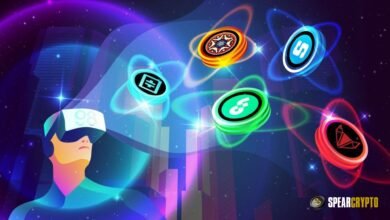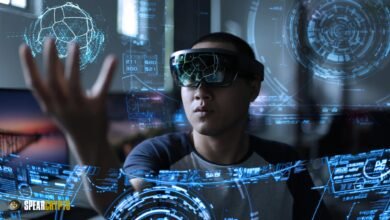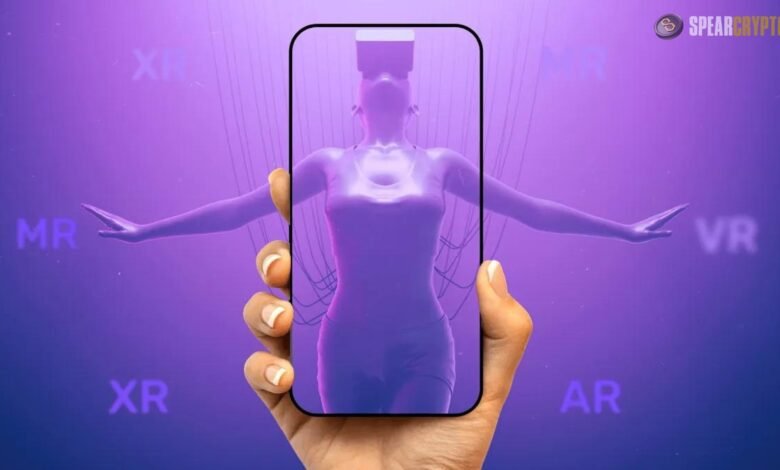
Metaverse App Development: The metaverse concept has rapidly evolved from a science fiction fantasy to a tangible reality, driving a new digital interaction and experience era. The metaverse is often described as a collective virtual shared space created by converging virtually enhanced physical reality and physically persistent virtual space, including augmented reality (AR), virtual reality (VR), and the internet. As this new digital frontier expands, metaverse app development has become a focal point for tech companies, startups, and developers worldwide. This article delves into metaverse app development’s current prospects, exploring key technologies, challenges, and opportunities in this burgeoning field.
The Foundations of the Metaverse
Before diving into metaverse app development, it’s essential to understand the foundational technologies that make the metaverse possible. These include:
- Virtual Reality (VR) and Augmented Reality (AR): VR and AR are central to the metaverse experience. VR provides immersive experiences by transporting users into entirely digital environments, while AR overlays digital content onto the real world. These technologies are crucial for creating the interactive and immersive experiences that define the metaverse.
- Blockchain Technology: Blockchain plays a vital role in the metaverse, particularly in digital ownership, decentralized finance (DeFi), and non-fungible tokens (NFTs). Blockchain ensures digital assets’ security, transparency, and ownership within the metaverse, enabling users to securely buy, sell, and trade items.
- Artificial Intelligence (AI): AI powers the metaverse by enabling smart, responsive environments and characters. It supports natural language processing, real-time analytics, and personalized experiences, making interactions within the metaverse more seamless and intuitive.
- Cloud Computing: Cloud computing enables vast computing power to render complex metaverse environments in real-time. It provides the necessary infrastructure to handle the data processing and storage needs of large-scale metaverse platforms.
- Internet of Things (IoT): IoT connects the physical world to the digital metaverse, allowing real-world data to influence virtual experiences. This integration is essential for creating metaverse applications that respond to real-world events and conditions.
Key Trends in Metaverse App Development
As the metaverse continues to gain traction, several key trends have emerged in metaverse app development:
Cross-Platform Development
One of the most significant trends in metaverse app development is the focus on cross-platform compatibility. The metaverse is not confined to a single device or platform but spans multiple devices, including VR headsets, smartphones, PCs, and even AR glasses. Developers are increasingly adopting cross-platform development tools and frameworks to ensure their applications run seamlessly across various devices, providing users with a consistent experience regardless of their hardware.
Social Interaction and Collaboration
The metaverse is inherently social, and applications that enable users to interact, collaborate, and socialize in virtual environments are at the forefront of development. These apps range from virtual meeting spaces for remote work to social VR platforms where users can hang out with friends. As remote work and virtual collaboration continue to rise, the demand for metaverse applications that facilitate social interaction is expected to grow.
Decentralization and Digital Ownership
Blockchain technology is driving the trend toward decentralization in the metaverse. Decentralized applications (dApps) that run on blockchain networks are becoming increasingly popular, offering users greater control over their digital assets and identities. NFTs, in particular, have gained significant attention as they allow users to own unique digital items within the metaverses, such as virtual real estate, artwork, and collectibles; this trend will continue as more users seek to assert ownership and control over their virtual experiences.
Realistic Avatars and Digital Identities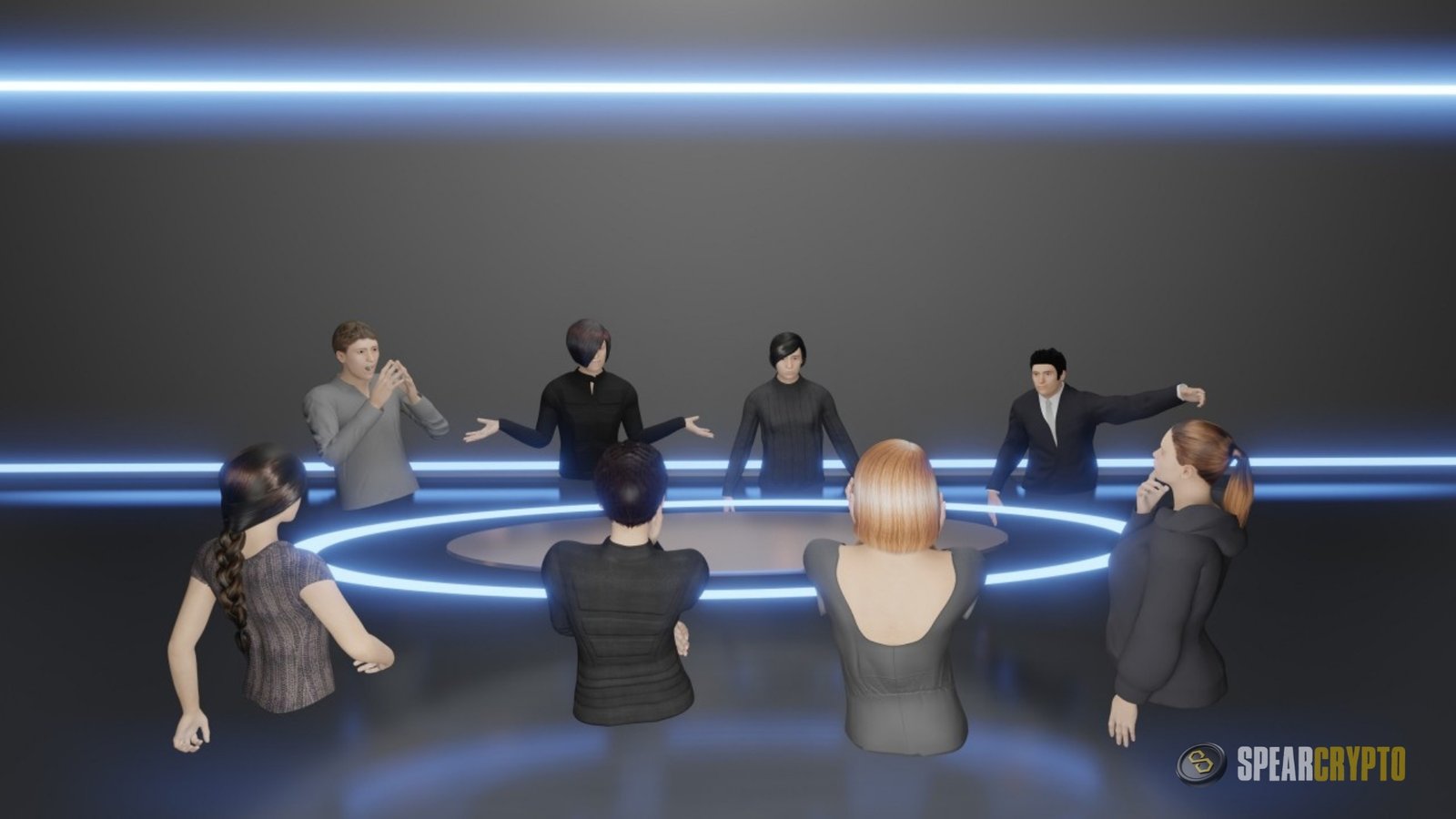
Creating realistic avatars and digital identities is a crucial aspect of the metaverse experience. Advances in AI, machine learning, and 3D modeling enable developers to create more lifelike avatars that accurately reflect users’ appearances and emotions. These avatars can be customized to a high degree, allowing users to express themselves in ways that were previously impossible in digital environments. As the metaverse evolves, the importance of digital identity and self-expression will only grow.
Immersive and Interactive Environments
The metaverse is defined by its immersive and interactive environments, and developers constantly push the boundaries of what’s possible in these spaces. From hyper-realistic virtual worlds to fantastical landscapes, metaverse app developers leverage cutting-edge graphics and physics engines to create experiences that blur the line between reality and the digital world.
Challenges in Metaverse App Development
Despite the exciting potential of the metaverse, developers face several challenges in creating applications for this new digital frontier:
Technical Complexity
Building metaverse applications requires expertise in various technologies, including VR/AR, blockchain, AI, and cloud computing. Integrating these technologies into a cohesive and seamless experience is a complex task that demands specialized knowledge and skills. Moreover, the need for real-time rendering of 3D environments and interactions adds technical complexity.
Interoperability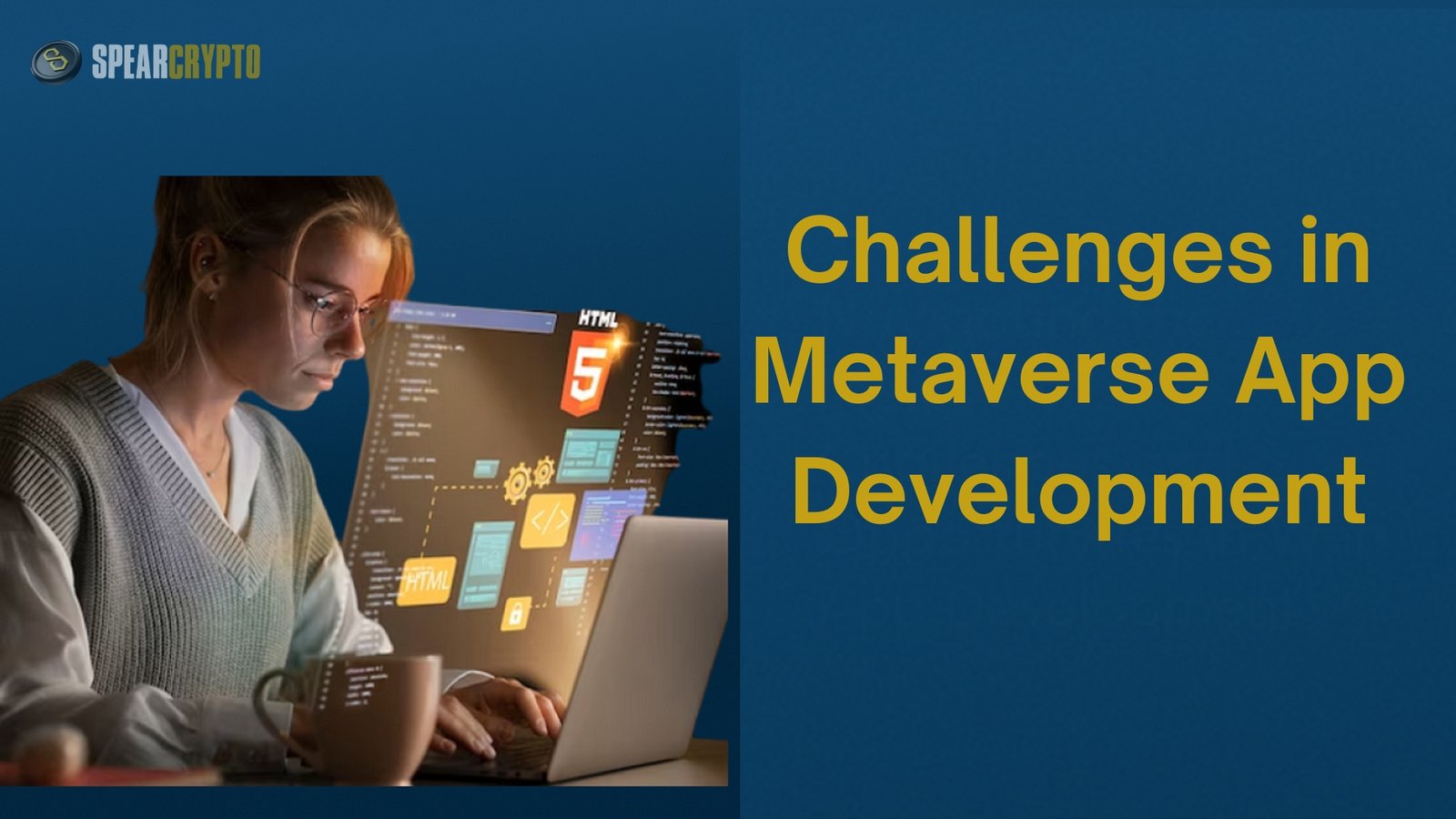
Interoperability is a significant challenge in the metaverse, as it involves ensuring that different virtual worlds, platforms, and applications can work together seamlessly. Achieving true interoperability requires standardized protocols and data formats currently lacking in the metaverse ecosystem. Users may be locked into specific platforms without interoperability, limiting the metaverse’s potential as a truly open and connected digital space.
Security and Privacy
As the metaverse becomes more integrated into our daily lives, concerns about security and privacy are increasingly important. Metaverse App Development: Protecting users’ digital identities, assets, and personal information in the metaverse is a significant challenge, especially given the decentralized nature of many metaverse platforms. Developers must implement robust security measures, including encryption, authentication, and data protection, to ensure users interact safely in the metaverse.
User Experience
Creating a compelling and user-friendly experience in the metaverse is no small feat. The metaverse’s immersive nature requires developers to rethink traditional user interface (UI) and user experience (UX) design principles. In VR and AR environments, users interact with digital content in three dimensions, which presents unique challenges in terms of navigation, accessibility, and usability. Ensuring that metaverse applications are intuitive and easy to use is essential for widespread adoption.
Scalability
Scalability is another critical challenge in metaverse app development. As more users enter the metaverse, the demand for resources and computing power will increase exponentially. Developers must ensure their applications can scale to accommodate large numbers of users without compromising performance or quality. This requires efficient resource management, load balancing, and optimization techniques.
The Future of Metaverse App Development
The future of metaverse app development is full of exciting possibilities. As technology advances, the metaverse will likely become more integrated into various aspects of our lives, from entertainment and social interaction to education, healthcare, and beyond. Here are some key areas where metaverse app development is expected to make significant strides:
Education and Training
The metaverse has the potential to revolutionize education and training by providing immersive, interactive learning experiences. Metaverse applications can create virtual classrooms, laboratories, and training simulations that allow students and professionals to learn in ways that are more engaging and effective than traditional methods. For example, medical students could practice surgeries virtually, or employees could undergo safety training in a simulated workplace.
Healthcare
In healthcare, metaverse applications could be used for telemedicine, mental health therapy, and rehabilitation. Virtual consultations with doctors, immersive therapy sessions, and interactive rehabilitation exercises are examples of how the metaverse could improve healthcare outcomes. The metaverse could also enable the visualization of complex medical data, helping doctors to diagnose and treat patients more effectively.
Virtual Commerce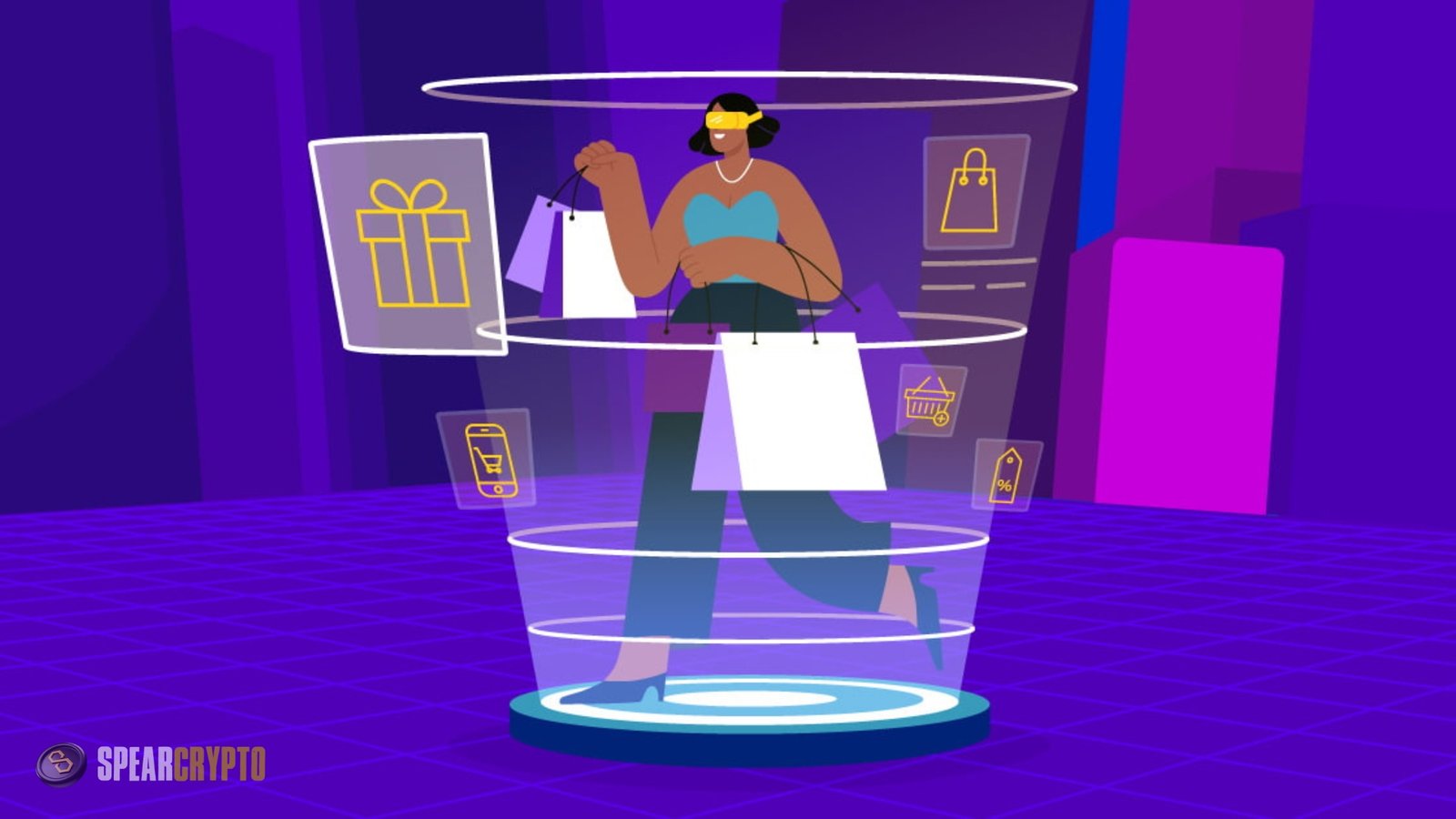
Virtual commerce, or v-commerce, is poised to become a significant part of the metaverse economy. Metaverse applications will enable users to shop for virtual and physical goods in immersive, interactive environments. Metaverse App Development: Brands and retailers are already exploring ways to establish a presence in the metaverse, creating virtual stores and showrooms where customers can browse and purchase products. Integrating NFTs and blockchain technology will also enable new digital ownership and forms of commerce.
Entertainment and Gaming
The entertainment and gaming industries are likely to be among the biggest beneficiaries of the metaverse. Metaverse applications can create entirely new forms of entertainment, from immersive concerts and live events to massively multiplayer online games (MMOs) in expansive virtual worlds. The ability to create and share user-generated content within the metaverse will also lead to a new wave of creativity and innovation in entertainment.
Social Impact and Inclusion
The metaverse has the potential to promote social impact and inclusion by providing access to experiences and opportunities that may be otherwise unavailable. For example, individuals with disabilities could participate in activities and environments adapted to their needs. At the same time, people in remote or underserved areas could access education, healthcare, and job opportunities through the metaverse. Developers are responsible for ensuring that metaverse applications are accessible and inclusive, enabling all users to benefit from this new digital landscape.
Conclusion
Metaverse app development is at the forefront of a digital revolution that promises to reshape how we interact with technology, each other, and the world around us. While the challenges are significant, the opportunities for innovation and growth are even more excellent. As developers push the boundaries of what’s possible in the metaverse, we expect a new era of immersive, interactive, and interconnected experiences that will redefine our digital lives. Whether in education, healthcare, commerce, entertainment, or social interaction, the metaverse is poised to become an integral part of our future, and metaverse app development will be the key to unlocking its full potential.






